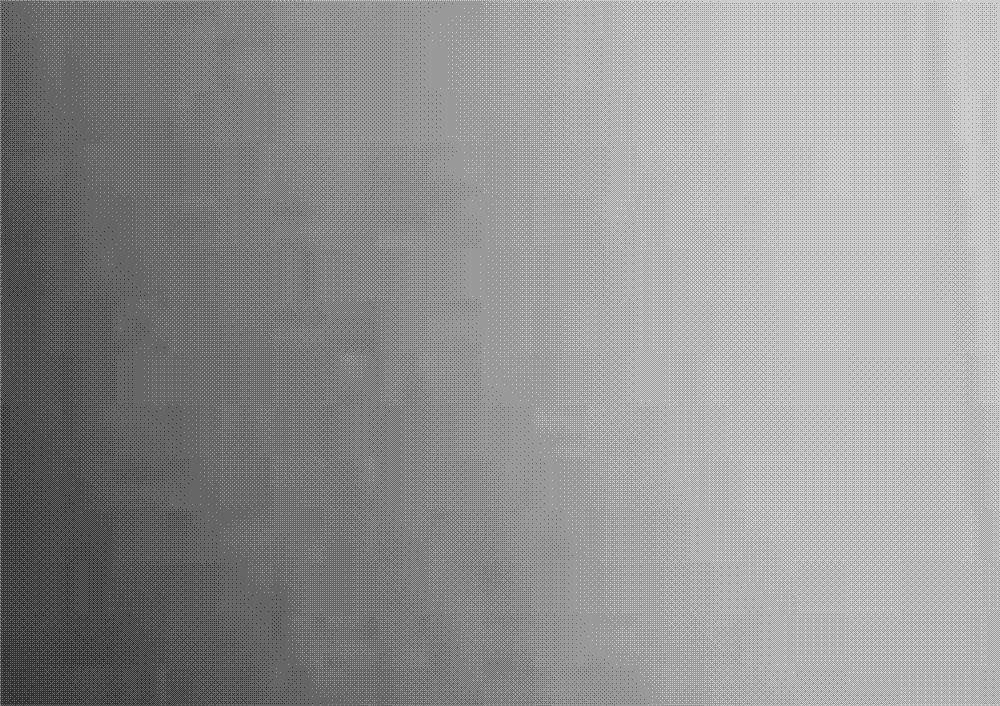Method for recovering hammer of refined forging machine through laser cladding
A technology of laser cladding and precision forging machine, applied in coating, metal material coating process and other directions, can solve the problems of complex surfacing welding process, achieve delayed expansion rate, excellent wear resistance, enhanced surface hardness and wear performance Effect
- Summary
- Abstract
- Description
- Claims
- Application Information
AI Technical Summary
Problems solved by technology
Method used
Image
Examples
Embodiment 1
[0031] The transition alloy layer adopts the composition and mass percentage of alloy powder: Ni 56%, Cr 18%, Co 12%, Mo7%, W 2%, Al 2%, C 0.25%, Ti 2.4%, B 0.35%.
[0032] The surface alloy layer adopts the composition and mass percentage of alloy powder: C 0.1%, Si 5%, Mn 1.2%, S0.025%, P 0.015%, Fe 7%, Mo 15%, Cr 15%, Co 2.5% , W 4.5%, and the rest is Ni.
[0033] The alloy powder for the transition alloy layer and the alloy powder for the surface alloy layer were fully mixed in a ball mill for 2 hours each, vacuum-dried at 100°C for 1.5 hours, and cooled naturally to obtain transition alloy layer cladding materials for laser cladding and Surface alloy layer cladding material.
[0034] Remove the dust, oil and rust on the hammer head of the precision forging machine, measure the size of each part of the hammer head of the precision forging machine, and determine the failure part and its wear amount. Remove the 0.5mm fatigue layer at the failure part of the precision forgi...
Embodiment 2
[0045] The transition alloy layer adopts the composition and mass percentage of alloy powder: Ni 56%, Cr 18%, Co 12%, Mo7%, W 2%, Al 2%, C 0.25%, Ti 2.4%, B 0.35%.
[0046] The surface alloy layer adopts the composition and mass percentage of alloy powder: C 0.8%, Si 5%, Mn 1.0%, S0.023%, P 0.013%, Fe 5%, Mo 16%, Cr 15%, Co 2.2% , W 5.0%, and the rest is Ni.
[0047] The alloy powder for the transition alloy layer and the alloy powder for the surface alloy layer were fully mixed in a ball mill for 2 hours each, vacuum-dried at 100°C for 1.5 hours, and cooled naturally to obtain transition alloy layer cladding materials for laser cladding and Surface alloy layer cladding material.
[0048] Remove the dust, oil and rust on the hammer head of the precision forging machine, measure the size of each part of the hammer head of the precision forging machine, and determine the failure part and its wear amount. Remove the 0.5mm fatigue layer at the failure part of the precision forgi...
Embodiment 3
[0055] The transition alloy layer adopts the composition and mass percentage of alloy powder: Ni 56%, Cr 18%, Co 12%, Mo7%, W 2%, Al 2%, C 0.25%, Ti 2.4%, B 0.35%.
[0056] The surface alloy layer adopts the composition and mass percentage of alloy powder: C 0.15%, Si 4.5%, Mn 1.0%, S 0.023%, P 0.013%, Fe 7%, Mo 15.8%, Cr 16%, Co 2.3%, W 5.3%, the rest is Ni.
[0057] The alloy powder for the transition alloy layer and the alloy powder for the surface alloy layer were fully mixed in a ball mill for 2.5 hours each, vacuum-dried at 120°C for 1 hour, and cooled naturally to obtain the transition alloy layer cladding material for laser cladding and Surface alloy layer cladding material.
[0058] Remove the dust, oil and rust on the hammer head of the precision forging machine, measure the size of each part of the hammer head of the precision forging machine, and determine the failure part and its wear amount. Remove the 0.5mm fatigue layer at the failure part of the precision fo...
PUM
| Property | Measurement | Unit |
|---|---|---|
| particle size | aaaaa | aaaaa |
| thickness | aaaaa | aaaaa |
| thickness | aaaaa | aaaaa |
Abstract
Description
Claims
Application Information
 Login to View More
Login to View More - R&D
- Intellectual Property
- Life Sciences
- Materials
- Tech Scout
- Unparalleled Data Quality
- Higher Quality Content
- 60% Fewer Hallucinations
Browse by: Latest US Patents, China's latest patents, Technical Efficacy Thesaurus, Application Domain, Technology Topic, Popular Technical Reports.
© 2025 PatSnap. All rights reserved.Legal|Privacy policy|Modern Slavery Act Transparency Statement|Sitemap|About US| Contact US: help@patsnap.com


